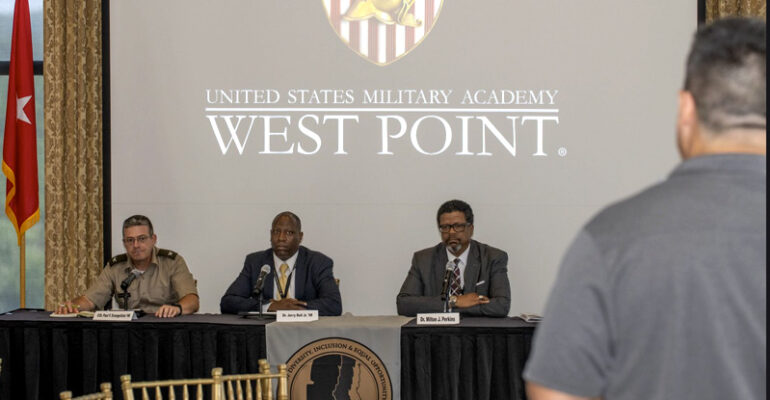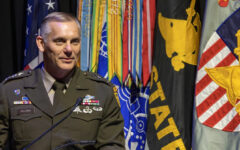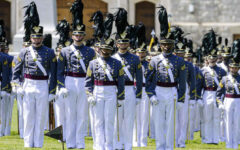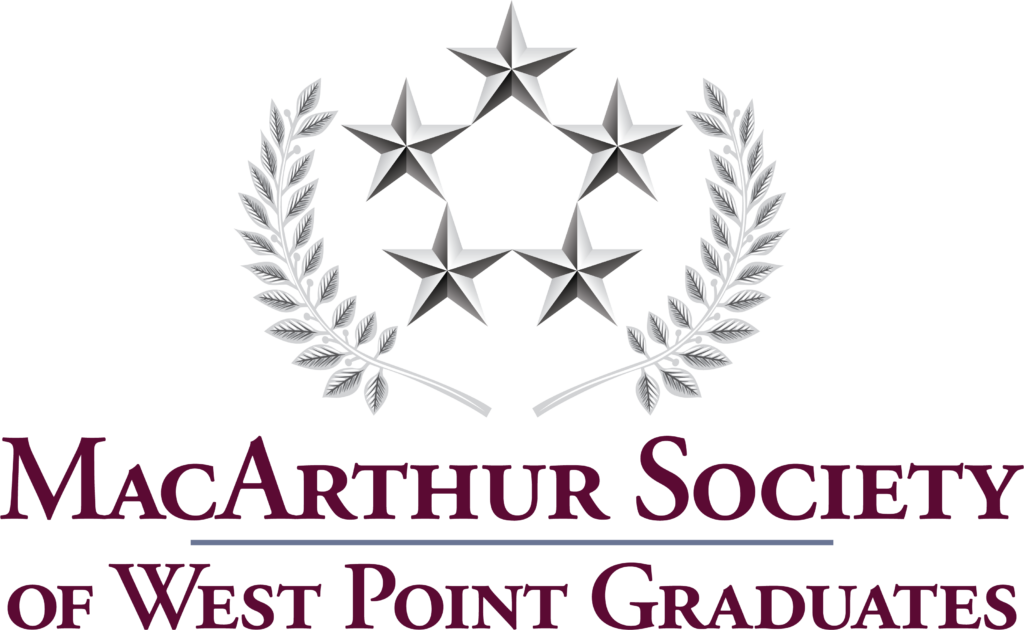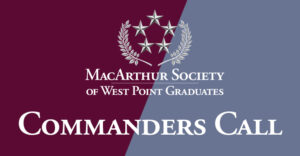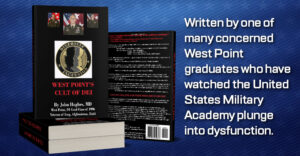When a Diversity Conference Could Benefit from an Increase in Diversity
19 September 2023 2024-01-24 16:08When a Diversity Conference Could Benefit from an Increase in Diversity
Col. (Ret.) William F. Prince, U.S. Army Special Forces
USMA 1970, MacArthur Society Board Member
From 30-31 August 2023, the West Point Office of Diversity, Inclusion and Equal Opportunity (ODIEO) hosted its annual Leadership Conference. The author of this article was in attendance.
The theme was “Shaping Tomorrow’s Defense: the Intersection of Diversity, Innovation, and National Defense.” The ODIEO team produced an administratively and logistically well-organized 20th anniversary conference.
That said, for a conference centered on diversity, there was a notable lack of diverse views, and an unfortunate lack of documentation supporting a plethora of platitudes.
The Diversity, Equity and Inclusion (DEI) movement is nothing if not controversial.
A growing number of voices are raising questions and expressing concerns that at best DEI is a waste of resources and at worst, that it fosters an environment of suspicion and victimhood. Yet nary a word was uttered on the controversies swirling around the DEI debate.
The vast majority of the several hundred attendees appeared comfortable in what can reasonably be described as an echo chamber.
Indeed, states like Florida have defunded DEI offices at state universities. Other states appear likely to be joining it. Corporations are reducing DEI staffs and bills in Congress are proposing legislation to eliminate DEI programs throughout the US Government.
Many in our country believe the words diversity, equity and inclusion have been hijacked to push a damaging narrative which prioritizes race, gender and membership in favored affinity groups (LGBTQIA+++), over merit.
Critics maintain that DEI initiatives divide groups into oppressors (usually white males) and oppressed (anyone who can claim victim status); clearly an anathema to the conference theme of “Shaping Tomorrow’s Defense.”
While, in this author’s view, there were quite a few areas for conference improvement, space limits him to highlighting just a few which stand out as especially important.
A regular refrain, starting with welcoming remarks from USMA Superintendent LTG Steven Gilland, was the importance, at the military academy, of teaching cadets how to think, not what to think. However, the selection of speakers appeared to contradict that refrain.
The conference would have benefitted greatly by including speakers or referring to works expressing a diversity of disparate views.
Heather Mac Donald, for example, has done ground-breaking research in her best-selling book, The Diversity Delusion.
ODIEO could have invited other speakers to participate either in person or remotely.
Sen. Tom Cotton and Rep. Michael Waltz (both combat veterans) could provide interesting commentary.
Yet another option would be to select portions of podcasts from individuals such as Jordon Peterson, LTC (Ret.) Allen West, Douglas Murray, Victor Davis Hanson, Dr. Carol Swain, or Dennis Prager, to mention just a few other thoughtful intellectuals with interest in these issues. Their perspectives would certainly provide for lively discussions.
There was also a confusing lack of specificity on defining exactly what is meant by “diversity.”
Many of the speakers exalted the need for, and benefits from, a diversity of ideas within groups. No one can argue with that.
Unfortunately, it was frequently unclear whether a speaker was using “diversity” to mean a diversity of ideas or when a speaker was using “diversity” to mean increased representation of women and minorities in decision making groups.
The same problem appeared repeatedly with the term “inclusion” – ideas or demographics. Clearly these are pivotal differences and ODIEO should require in the future that speakers clarify and define their terms.
USMA CSM Phil K. Baretto stated that “diversity makes us stronger.” Other speakers repeated similar platitudes such as “diversity is our greatest strength.”
When referring to demographics, there was a lack of any empirical data to support such statements. According to the Nov.-Dec. 2020 issue of the Harvard Business Review,
“These rallying cries for more diversity in companies have three things in common: All articulate a business case for hiring more women and people of color; all demonstrate good intentions; and none of the claims is actually supported by robust research findings.”
The USMA’s Chief Data Officer, Col. Paul F. Evangelista ‘96, in commenting on attempts to measure the effectiveness of DEI responded, “We don’t have the data.” His admission was a brief flicker of academic candor. DEI support which, if even offered, was largely anecdotal.
Mr. Abdul Subhani holds the USMA Distinguished Chair of Innovation and Strategic Engagement. Mr. Subhani stated that “study after study confirms that heterogeneous groups outperform homogeneous groups.” Regrettably he did not identify any of these studies.
Mr. Dan Streetman ’90, CEO of the Tanium corporation, supported the view that heterogeneous businesses produced higher profits than homogeneous groups. Unfortunately he provided only personal, anecdotal evidence.
Even worse, the Principal Deputy Assistant Secretary of the Army for Manpower and Reserve Affairs, Ms. Yvette K. Bourcicot claimed that homogeneous armies are no match for the U.S.
One hopes that at least some of the attendees questioned such a fatuous statement.
Through 20 years of war, the Taliban (certainly a homogeneous group if ever there was one) proved quite a match for the U.S. military. (Full disclosure, this author had several deployments to Afghanistan and saw no indication that the Taliban or Al Qa’ida celebrated diversity.)
Another major theme was the lack of women and minorities especially in senior positions in industry, academia and the military.
Particularly troubling were several comments made by Gen. (Ret.) Richard Clarke during the evening’s “fireside chat.” He recounted how Defense Secretary Lloyd Austin had complained to him that the U.S. Special Operations Command (USSOCOM) was the “least diverse unit in DOD.”
Rather than immediately embark on what Gen. Clarke mandated as an “operational imperative” (aka crash program?) to increase diversity at SOCOM, he might have instead responded, “Yes, Mr. Secretary, but we maintain rigorous standards producing and deploying the toughest, most lethal warriors possible, regardless of either race or gender.”
Also during Gen. Clarke’s chat, he noted a visit to SOCOM headquarters by a group of business leaders, who upon looking at the photos of the senior SOCOM leaders described said leaders as “vanilla” which reinforced Gen. Clarke’s operational imperative for more women and minorities in USSOCOM.
A better response might have been, “The color of an individual’s skin has never been, and will never be, a determining factor in providing the most capable leadership to our Special Operations Forces.”
The term “woke” was rarely mentioned and on each occasion only in very dismissive and/or disparaging terms; perhaps to avoid having to deal with concerns such as teaching Critical Race Theory or pronoun sensitivity training.
USCC CSM Robert T. Craven said that he “hates” and finds “sickening” any criticism that West Point has gone “woke.”
Interestingly, neither he nor any other speaker mentioned the fact that after stonewalling a Freedom of Information Request, it took a lawsuit to finally force West Point to tell the truth about the teaching of Critical Race Theory, reluctantly having to release 653 pages of documentation on the subject.
Dr. Milton J. Perkins, senior Vice President of ActOne Government Solutions, Inc., antagonistically defied anyone to even define the term “woke.” This was a silly challenge. Anyone even remotely following the debate could come up with a short working definition such as “woke refers to progressive identity politics where race and/or gender trump merit.”
In sum, the ODIEO conference would be better served by including a diversity of views, especially from speakers who challenge the basic tenants of DEI. Such a challenge would result in a sharper focus on the part of speakers who advocate for DEI.
Further, presenters could strengthen their case for DEI if they could provide empirical data and/or cite specific, peer reviewed studies to support their views that diversity makes an organization stronger and even better if they could provide evidence which applies directly to combat units.
Ideally, since this was a leadership conference, speakers must forcefully emphasize that selection or promotion in our military should be based on demonstrated merit and the content of an individual’s character, not on race or gender.
First published in StandUpAmericaUS.org
Air Force Academy purple rope cadet “Diversity Advisor”:

